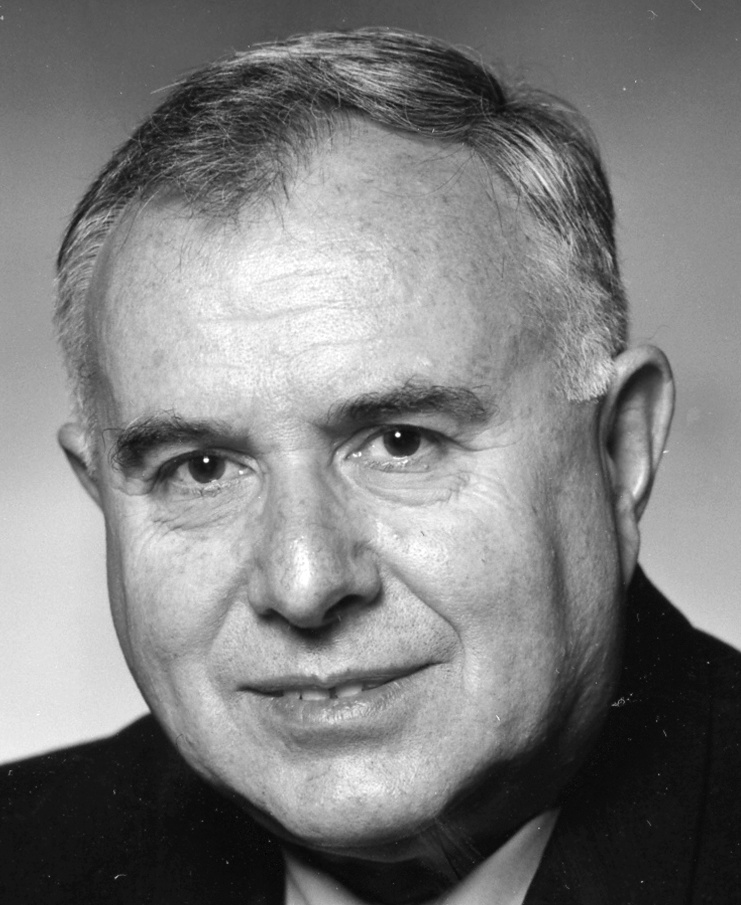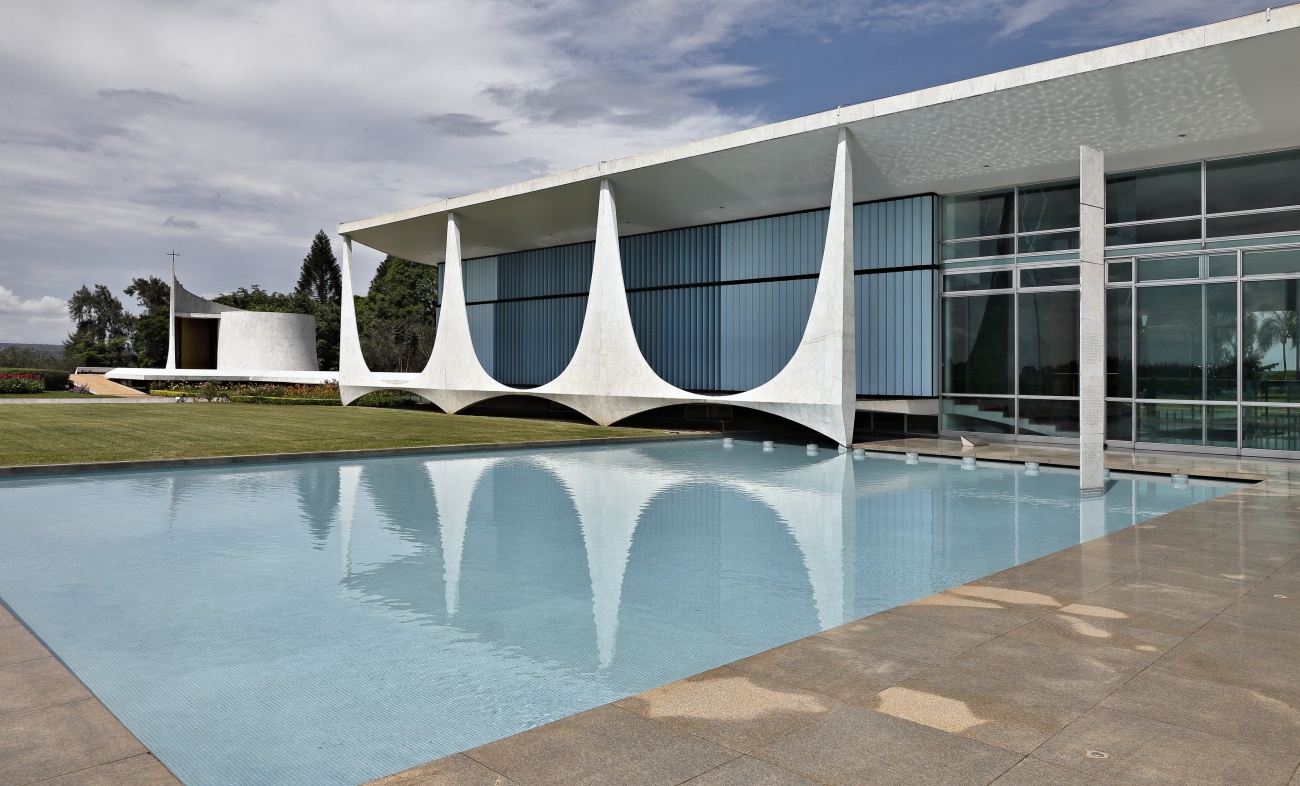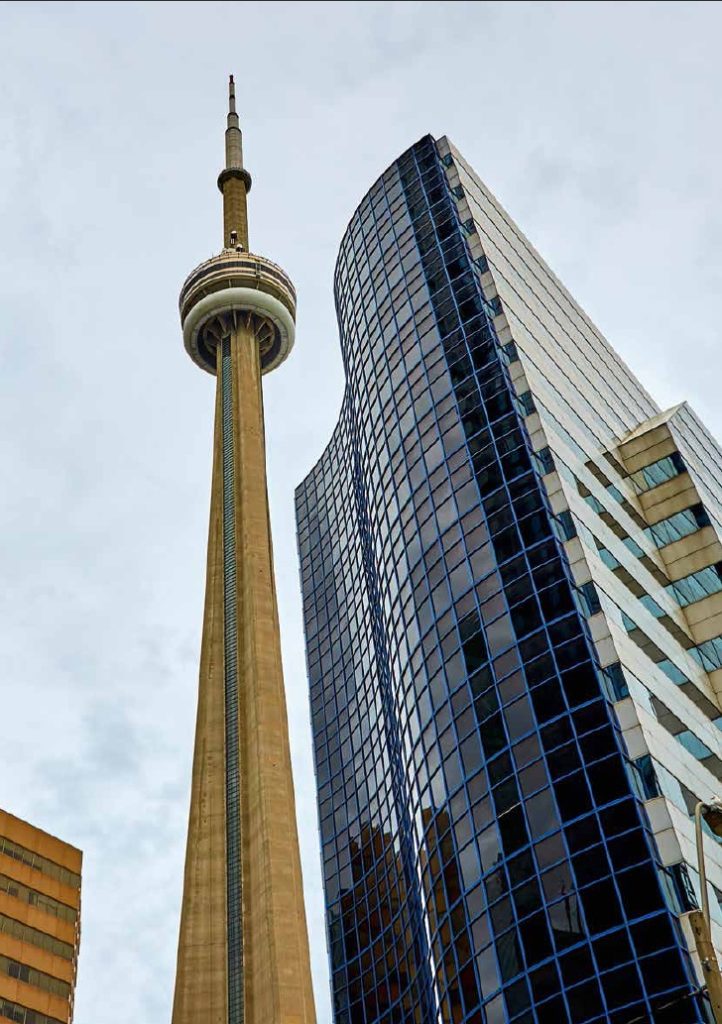
Během posledních 50 let se beton v Kanadě vyvinul z jednoduchého a robustního materiálu v komplexní kompozit s impozantně zlepšenými materiálovými vlastnostmi. Díky vývoji plastifikátorů a použití mikrosiliky byl konvenční beton s válcovou pevností kolem 30 MPa, který byl používán před výstavbou CN Tower (1973), vylepšen až na ultra vysokohodnotný beton s pevností 200 MPa, použitý pro stavbu lávky v Sherbrooke (1998). Článek sleduje vývoj betonu se zaměřením jak na technický pokrok přímo v technologii betonu, tak na významné konstrukce postavené díky této technologii. Prezentován je rovněž pokrok v oblasti směsných cementů a plastifikátorů na bázi polykarboxyletherů společně s důrazem na to, jak dosáhnout optimalizovaného a bezpečného použití těchto nových příměsí a přísad do betonu.
Příspěvek popisuje pokrok ve výrobě betonu, kterého bylo dosaženo v Kanadě v posledních 50 letech, a přibližuje i některé současné problémy či směry vývoje. Zmíněný pokrok je umožněn zlepšením mikrostruktury ztvrdlé cementové pasty, což vyvolalo průlom v technologii betonu. Jsou zde popsány i velkolepé betonové stavby, které byly v Kanadě úspěšně realizovány v letech 1970 až 2000.
Ačkoliv jsou nyní běžně používány směsné cementy, aby se snížila uhlíková stopa betonových konstrukcí, a na trh byly také uvedeny nové superplastifikátory, vyvstaly některé otázky týkající se běžného používání těchto nových technologií. Pokud se totiž nebudou záhy brát v úvahu některá opatření v oblasti pojiv s minerálními příměsmi, může být určitý pokrok dosažený během posledních 50 let dokonce kontraproduktivní. Naštěstí není řešení těchto problémů složité.
Začněme tedy naši pouť pohledem na beton v Kanadě právě před výstavbou CN Tower v roce 1973.
Éra lignosulfonanů
Před stavbou CN Tower v roce 1973 představoval ten nejlepší beton v Kanadě provzdušněný beton s pevností 30 MPa a se sednutím kužele 100 mm. Tento beton byl vyráběn s použitím plastifikátorů na bázi lignosulfonanů, jejichž dispergační účinky byly omezené a které byly obvykle schopné snížit dávku vody o 5 až (v nejlepším případě) 8 %. Lignosulfonany byly vyráběny z vedlejších produktů papírenského průmyslu. Avšak po pečlivém výběru složek betonu pro CN Tower byl John Bickley (pověřený vedením stavby) schopen zajistit výrobu provzdušněného betonu s pevností 50 MPa z cementu, který měl obsah trikalciumaluminátu 6 %. Konstruktér Franz Knoll vyžadoval tento typ cementu kvůli snížení vývoje hydratačního tepla a redukci smrštění v masivních prvcích (o tloušťce 1,2 m) základových konstrukcí CN Tower. Kromě toho byl výběr cementu s nízkým obsahem C3A klíčovým faktorem pro úspěšné ukládání betonu [12]: nižší obsah nejaktivnějších zrn C3A (která na sebe vážou lignosulfonany dříve, než je jejich hydratace retardována rozpuštěným sádrovcem) vyústil v lepší schopnost lignosulfonanů dispergovat cementová zrna.

Při výstavbě CN Tower během podzimu venkovní teplota klesala. Bickley se rozhodl nahradit část cementu Type 20 cementem Type 10 v přírůstcích po 10 %, takže posledních 100 m věže bylo vybetonováno s cementem Type 10. (Pozn.: Dle tehdejší kanadské normy představoval cement Type 10 cement pro obecné použití a cement Type 20 cement s mírným vývojem hydratačního tepla a/nebo s průměrnou odolností proti síranům.)
Až do postavení Burdž Chalífa v Dubaji (2010) byla CN Tower nejvyšší volně stojící betonovou konstrukcí na světě. Beton CN Tower nepodléhá času a za celou dobu od uvedení do provozu na něm bylo provedeno minimální množství oprav, jako např. oprava 1 m3 porušeného betonu poblíž vrcholu věže, která proběhla před několika lety.
Éra polysulfonátů
Na konci roku 1970 byly výrazné dispergační účinky dvou polymerů objeveny téměř současně v Japonsku (polynaftalenové sulfonáty – PNS) a v Německu (sulfonáty polymelaminů – PMS). Tyto dva polymery měly dobře definovanou strukturu, takže komerční plastifikátory se lišily pouze stupněm polymerace a procentem sulfonovaných β‑poloh, což záviselo hlavně na přesnosti jejich výroby a na čistotě používaných naftalenů a melaminů.
Zprvu byly tyto superplastifikátory používány hlavně ke zvětšení sednutí kužele běžného betonu. První velkou stavbou v Kanadě, na které byly tyto superplastifikátory ve velké míře použity, byl Olympijský stadion v Montrealu v roce 1984. Tehdy byly superplastifikátory importovány z Evropy.
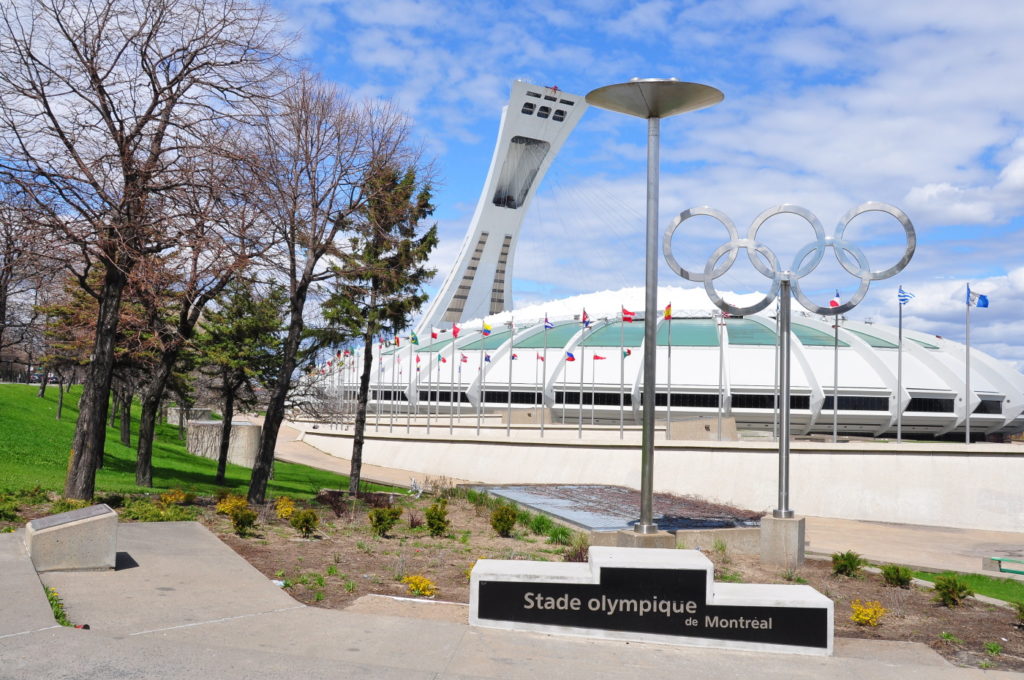
Brzy nato se Handy Chemicals z La Prairie de Quebec staly světovým lídrem v produkci PNS s 80 % sulfonovaných β‑pozic a se stupněm polymerizace 10. Produkované PNS byly ve velkém používány zejména v Kanadě a USA. Brzy se ukázalo, že tyto superplastifikátory mohou být použity nejen ke zlepšení zpracovatelnosti, ale také ke snížení vodního součinitele. To otevřelo éru vysokohodnotného betonu (HPC – High Performance Concrete) ve stavebním průmyslu.
Při použití jednoho konkrétního polysulfonátu (PS) s různými portlandskými cementy byly ovšem záhy nalezeny odlišnosti. Některé kombinace superplastifikátoru a portlandského cementu byly schopné udržet zpracovatelnost 90 min, zatímco v jiných případech došlo ke ztrátě zpracovatelnosti během 15 min. Někdy způsobila malá odchylka v dávkování superplastifikátoru téměř segregaci betonu, nebo naopak ztrátu zpracovatelnosti, jindy bylo možné tolerovat i výraznější odchylky bez vážnějšího dopadu na zpracovatelnost [25]. Při popisu tohoto podivného chování se objevily nové pojmy: kompatibilní a nekompatibilní kombinace a robustní a nerobustní kombinace.
Bylo překvapivé, že dva cementy, které splňovaly požadavky stejných norem, se při použití stejného superplastifikátoru nechovaly stejně. Na vysvětlení tohoto podivného chování byl zaměřen rozsáhlý výzkum. Nakonec bylo zjištěno, že kompatibilita a robustnost kombinace cementu a superplastifikátoru závisí zejména na obsahu a reaktivitě C3A, na jemnosti mletí cementu a na rozpustnosti síranů [20].
Potvrdilo se, že experimentální podmínky, které jsou předepsány v cementářských normách, byly od začátku slabým místem řešení tohoto problému. Běžné zkoušky cementu jsou prováděny na pastách a maltách s vysokým vodním součinitelem (u malt 0,50) bez deflokulace cementové pasty superplastifikátorem. V takových řídkých pastách je reologie ovlivňována zejména vodou, cementová zrna jsou daleko od sebe na to, aby mohla interagovat a negativně ovlivňovat reologii v počátečních stadiích hydratace cementu. Pro tyto podmínky je optimalizována jemnost mletí a tzv. „obsah sádrovce“ tak, aby bylo dosaženo požadovaného počátku a doby tuhnutí a počáteční pevnosti, ovšem na reologii v prvních 90 min není brán zřetel.
Pokud si ale všimneme směsí s nízkým vodním součinitelem, a tedy s těsnějším uspořádáním cementových zrn, pak hydratující částice interagují a zásadním způsobem ovlivňují reologii směsi. Už to není obsah vody, co ovlivňuje reologii betonu, ale jsou to krystaly ettringitu a C‑S‑H gelu, které se tvoří na površích hydratujících cementových zrn. Ovlivnění reologie betonů s nízkým w/c proto může být v některých případech snadnější, jindy naopak obtížnější. V určitém případě je jedinou možností, jak zajistit zachování zpracovatelnosti po dobu 90 min, výměna cementu za jiný. Ale v jiných případech, pokud je cement málo reaktivní, je možné snížit w/c až k hodnotě 0,20.
Éra křemičitých úletů s polysulfonáty
Křemičitý úlet je vedlejší produkt výroby křemíku, ferrosilicia a zirkonia. Křemičité úlety produkované v Québecu začaly být v betonu používány začátkem 80. let. S jejich použitím bylo záhy dosaženo pevnosti 100 MPa [27]. První vysokohodnotný beton s pevností v tlaku vyšší než 100 MPa byl beton použitý při betonáži experimentálních sloupů v Lavalin Building v Montrealu v roce 1984 (obr. 3). Byl to nejpevnější beton, který byl v Kanadě použit, až do roku 1998, kdy byla postavena lávka v Sherbrooke [4], [5]. Tehdy nebyly křemičité úlety součástí cementu, byly přidávány jako příměs do míchačky.
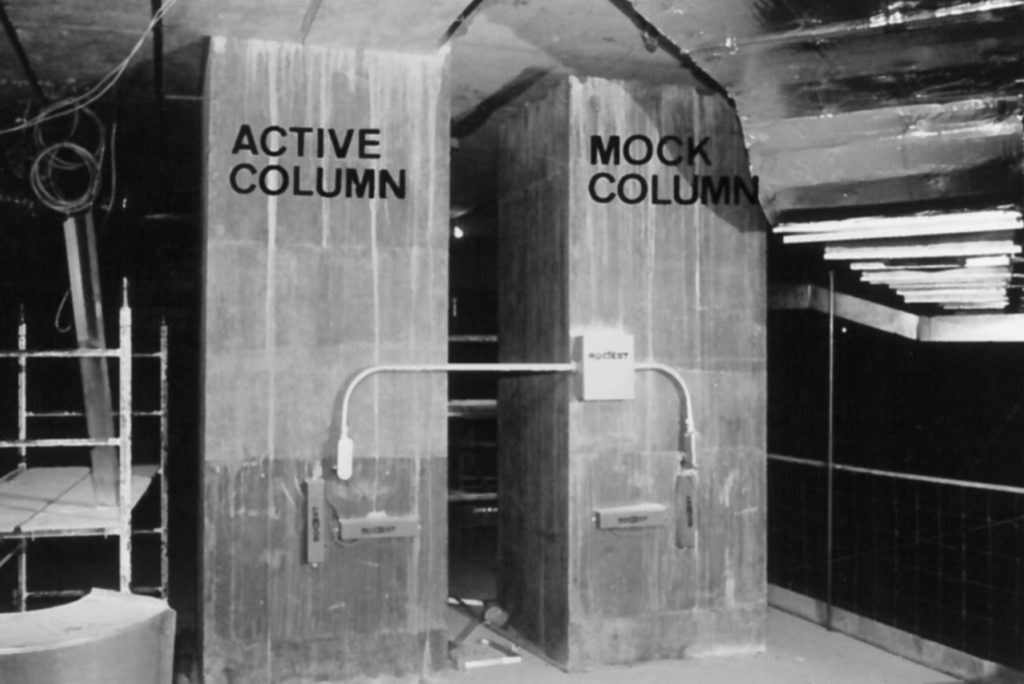
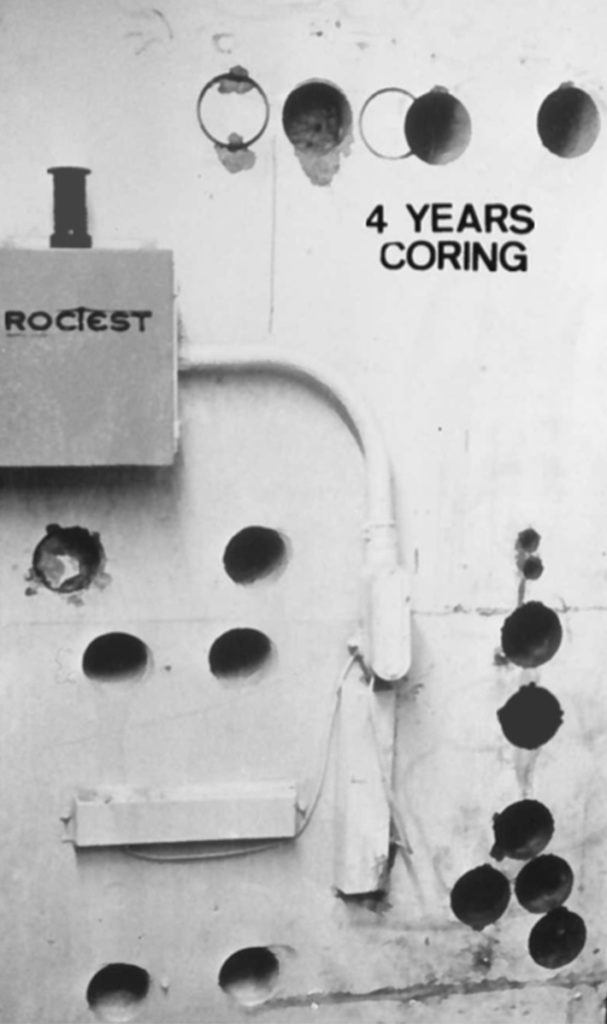
Kombinaci PNS, křemičitých úletů a strusky využil John Bickley při výrobě neprovzdušněného betonu s pevností 70 MPa při stavbě Scotia Plaza v roce 1987, prvního mrakodrapu v Kanadě vybudovaného z vysokohodnotného betonu. Bickley použil jako pojivo směs složenou ze 65 % portlandského cementu, 28 % strusky a 7 % křemičitých úletů [29]. Aby se vyhnul větším prodlevám v dodávkách betonu, požadoval Bickley mobilní mísicí centrum na suché složky přímo na místě, přestože nedaleko byly dvě nebo tři betonárny, které by mohly dodávat vysoce kvalitní beton. Stavba zabrala dva roky. Během léta bylo kamenivo a cement tak horké, že ani použití ledu nestačilo k tomu, aby byla teplota betonu snížena pod 25 oC, a pro její snížení bylo proto nezbytné použít tekutý dusík.
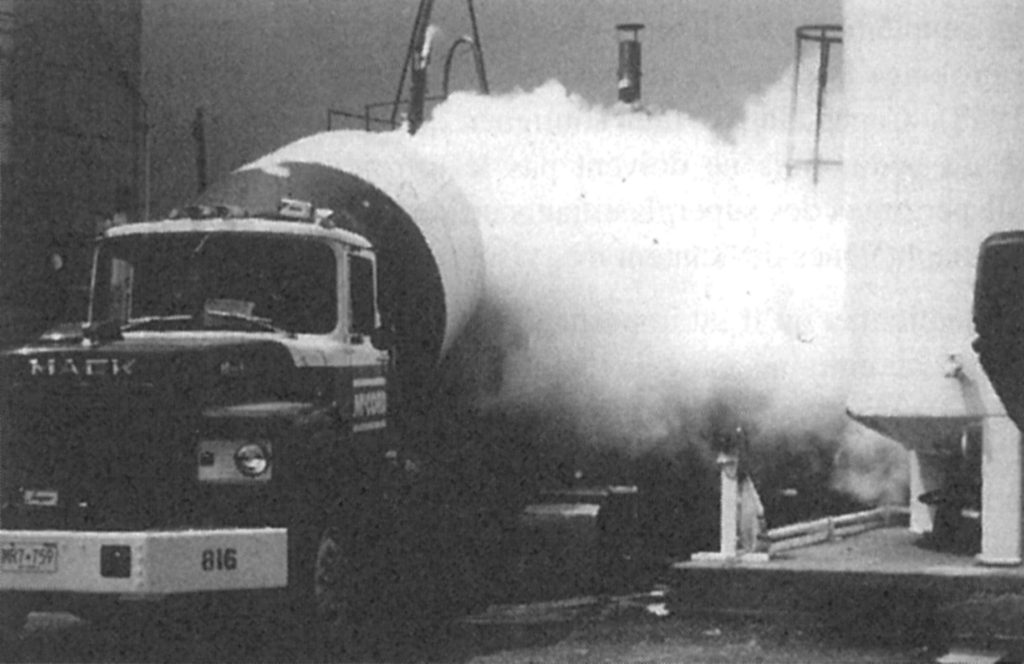
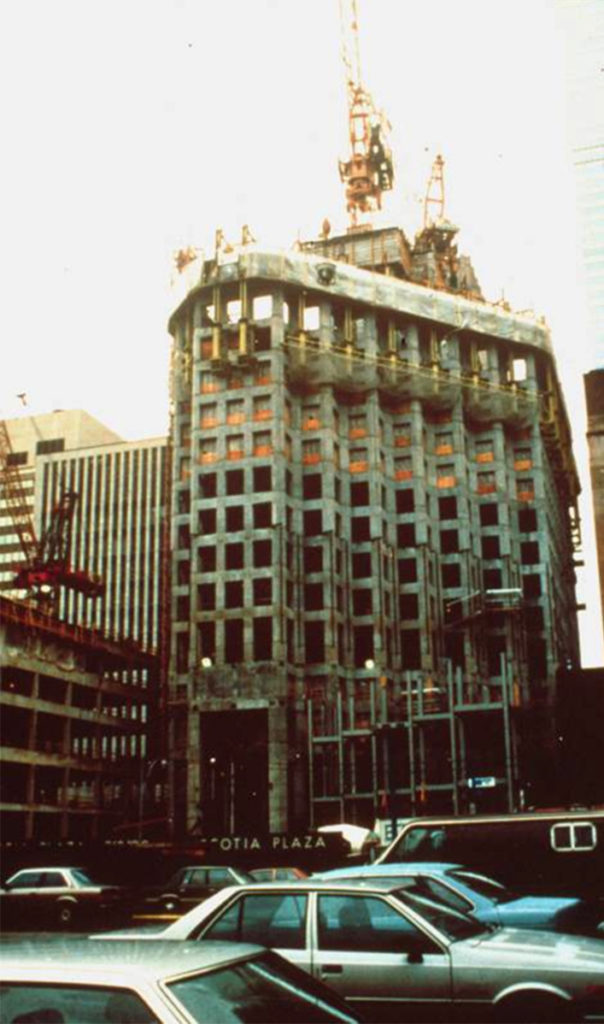
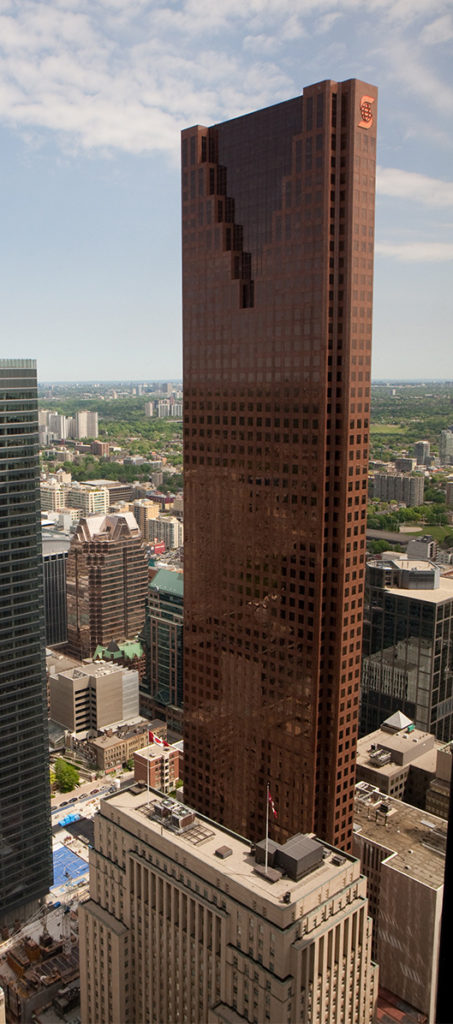
Díky velkému úspěchu křemičitých úletů začali producenti cementu v Québecu velmi rychle nabízet směsný cement obsahující 7 až 8 % křemičitých úletů. Tento cement byl označen jako cement Type 10 SF a s plastifikátory byl používán v betonech s nízkým vodním součinitelem (0,30 i méně). Už tedy nebylo tak obtížné vyrábět beton s pevností 70 až 100 MPa a se sednutím kolem 200 mm [3]. Tento cement byl předepsán v mnoha projektech v západní Kanadě, kde se používal vysokohodnotný beton.
Éra cementu Type 10 SF a polysulfonáty
První mosty z vysokohodnotného betonu v provincii Québec
V Québecu byl cement s křemičitými úlety (Type 10 SF) společně s PNS produkovanými Handy Chemicals použit při stavbě řady menších mostů: v roce 1992 u Portneuf Bridge (140 m3 betonu), v roce u 1993 nadjezd Monteé Saint-Rémi (450 m3) a v roce 1995 u Jacques Cartier Bridge (2 000 m3) v Sherbrooke [14], [16], [21] až [24].
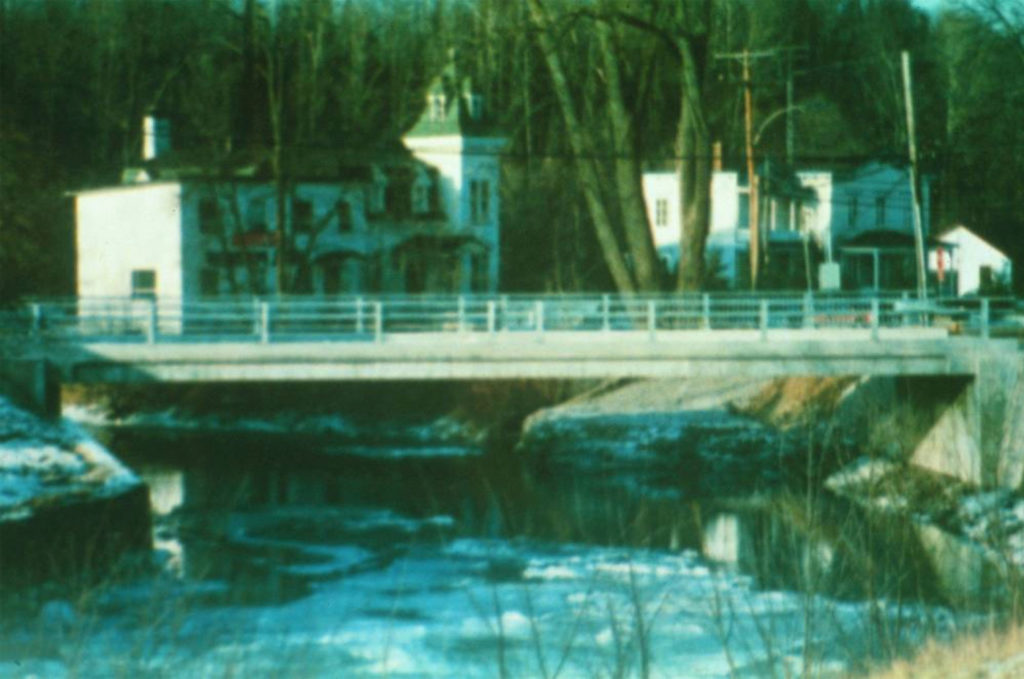
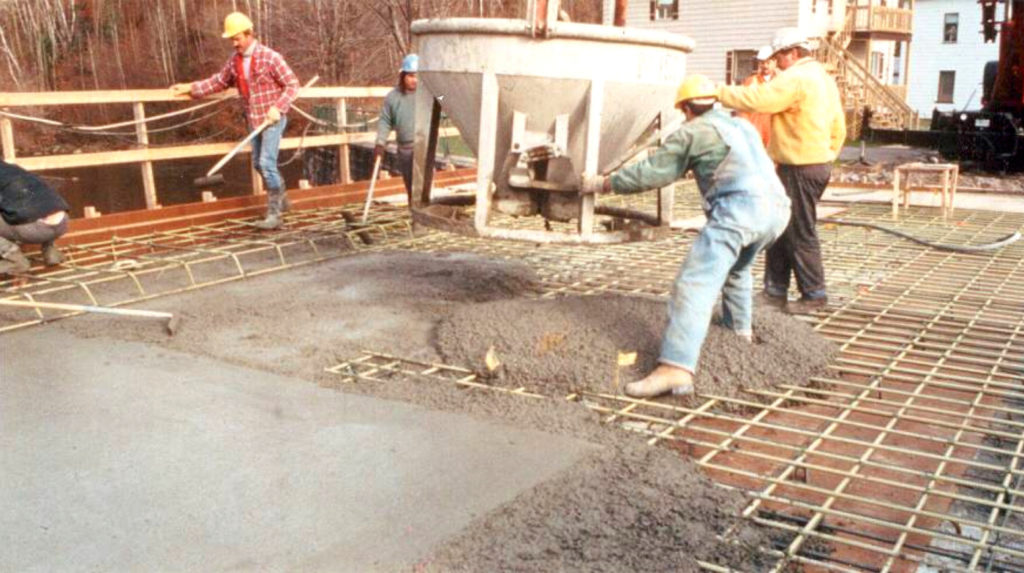
Tyto mosty z vysokohodnotného betonu byly postaveny během podzimu (Portneuf Bridge), vrcholícího léta (nadjezd Monteé Saint-Rémi) a od května do prosince (Jacques Cartier Bridge).
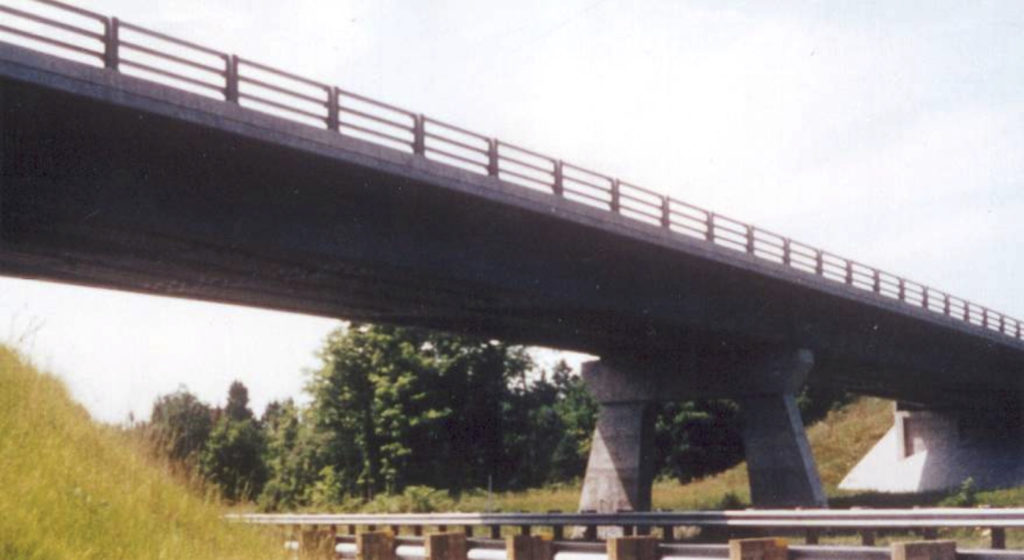
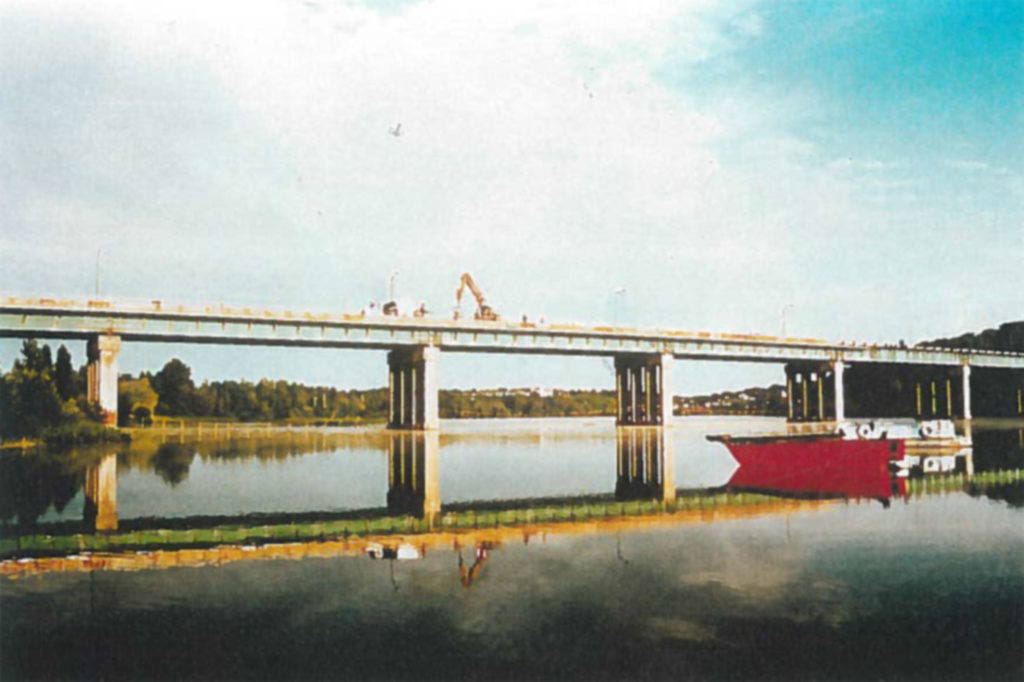
Vysokohodnotné betony při jejich výstavbě byly ukládány pomocí násypek, aby byl zajištěn nízký součinitel rozložení vzduchových pórů, a byly pečlivě ošetřovány vodou po dobu sedmi dní, aby se zabránilo autogennímu smrštění.
Plošina Hibernia – základová konstrukce
Základová konstrukce těžní plošiny Hibernia byla navržena z vysokohodnotného betonu, aby odolávala nárazům ledových ker [19], [33], [34]. Během výstavby plošiny se však ukázalo, že bude nezbytné snížit objemovou hmotnost vysokohodnotného betonu, aby vzrostla vztlaková síla kvůli přetížení mechanické části působením gravitace základu kvůli těžké mechanizaci. Byla zvažována dvě opatření. Buď zvýšit provzdušnění betonu (zvýšení obsahu vzduchu o 1 % znamená snížení objemové hmotnosti betonu o 25 kg/m3), nebo nahradit část hrubého kameniva lehkým kamenivem. Po dlouhých diskuzích bylo rozhodnuto přijmout obě opatření v případě montáže dalšího mechanického vybavení. Obsah vzduchu byl nepatrně zvýšen a 50 % hrubého kameniva bylo nahrazeno lehkým kamenivem dodávaným z Texasu. Aby se nezhoršila zpracovatelnost při použití lehkého kameniva, rozhodl se George Hoff, inženýr zodpovědný za betonářské práce, udržovat lehké kamenivo stále v nasyceném stavu stříkáním vody na haldy tohoto kameniva 24 h denně.
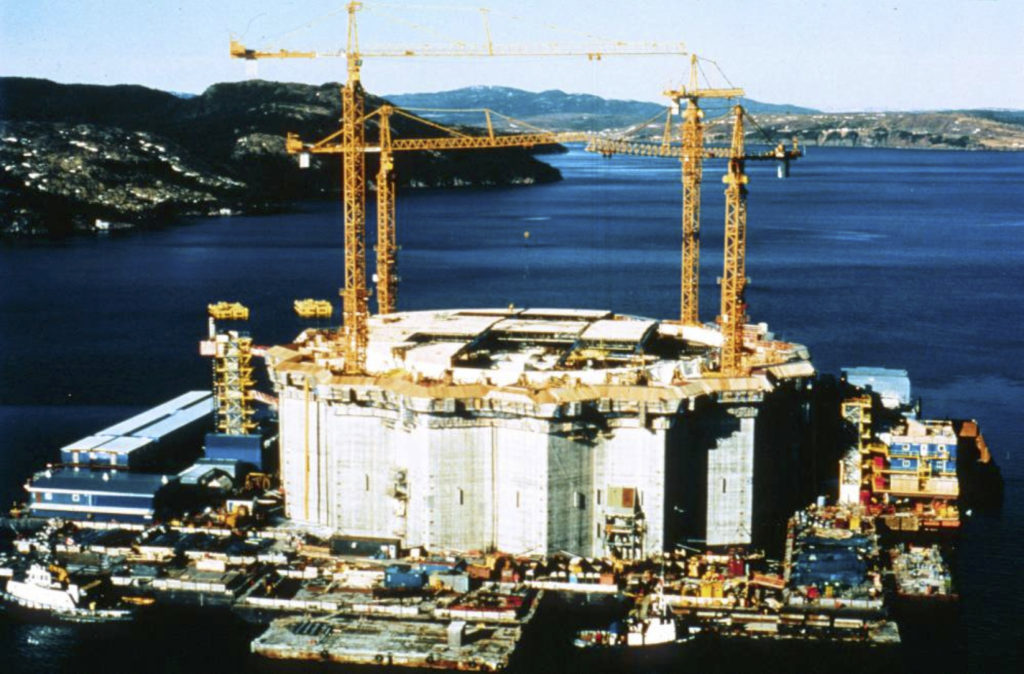
Jakmile byly provedeny první zkoušky tohoto lehčího betonu, byli všichni překvapeni, protože nehledě na nepatrné zvýšení obsahu vzduchu a použití lehkého kameniva, se pevnost betonu ani jeho modul pružnosti nesnížily, ba naopak, nepatrně vzrostly. Tehdy ještě nebylo známo, že vodou nasycené lehké kamenivo představuje zdroj vody pro vnitřní ošetřování betonu, čímž se snižuje autogenní smrštění a zvyšuje se množství zhydratovaných cementových zrn.
Confederation Bridge
Confederation Bridge byl postaven mezi léty 1993 až 1997, aby spojil Ostrov prince Edwarda s Brunswickem. Je 12,9 km dlouhý a jde o zcela prefabrikovanou konstrukci, přičemž dílce byly zhotoveny z různých vysokohodnotných betonů [9], [31]. Jediné dva místní materiály, které byly při stavbě mostu použity, byly voda a vzduch na provzdušnění. Hrubé kamenivo a cement byly přivezeny z Nového Skotska a písek se superplastifikátorem z Québecu.
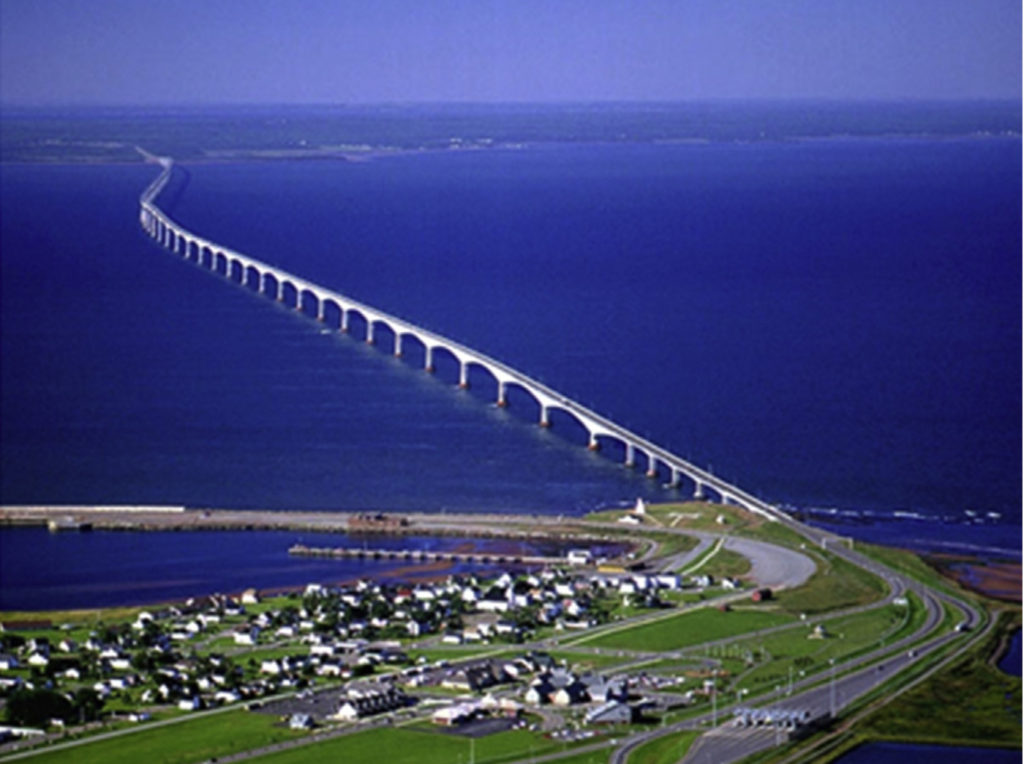
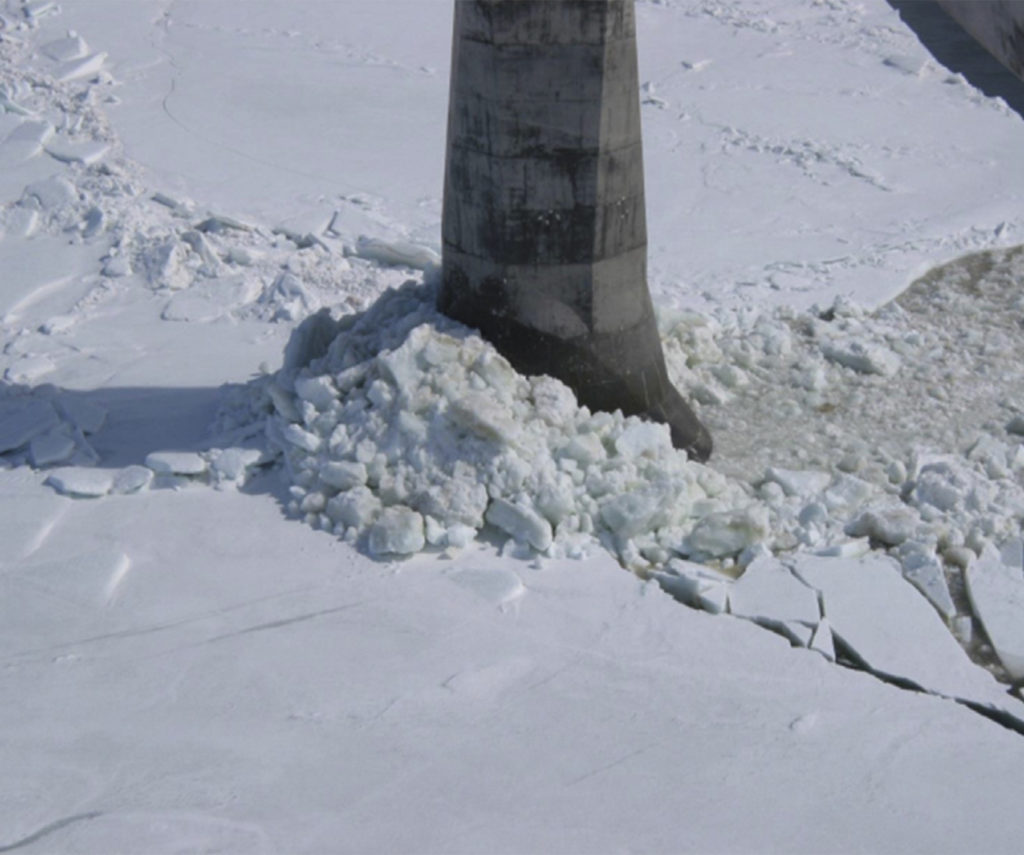
Návrh betonu představoval velkou výzvu, zvláště pokud šlo o betonáž ledolamů, které byly v příbojové zóně v zimě dvakrát denně vystaveny zmrazování a rozmrazování a zároveň velmi tvrdé abrazi ledem během jara, kdy puká ledový příkrov v Northumberlandské úžině. Kvůli odolnosti proti abrazi ledovými krami bylo rozhodnuto zvýšit tlakovou pevnost provzdušněného betonu snížením vodního součinitele na nejnižší dosažitelnou hodnotu. Náhradou 15 % cementu popílkem, přiváženým z Nového Skotska, a snížením vodního součinitele w/b k hodnotě 0,25 bylo možné vyrábět beton s provzdušněním 5 % (po čerpání) s průměrnou tlakovou pevností 93 MPa [1].
Po čerpání nebylo možné zaručit součinitel rozložení vzduchových pórů menší než 220 µm, což požadovala pro mrazuvzdorný beton kanadská norma CSA A23.1. Univerzita v Sherbrooke a Lafarge Research Centre v Montrealu provedly speciální výzkumný program, aby našly maximální hodnotu tohoto součinitele, která by zaručila mrazuvzdornost zmíněného betonu po 500 cyklech podle ASTM C666 (Procedure A).
Bylo navrženo pět různých betonů ze složek používaných při stavbě mostu. Tyto betony byly vyráběny s postupně zvyšujícím se provzdušněním, takže výslední součinitelé rozložení vzduchových pórů se pohybovaly v rozmezí 180 až 450 µm. Po provedení zkoušek mrazuvzdornosti se ukázalo, že pouze beton se součinitelem rozložení vzduchových pórů 450 µm nevyhověl 500 cyklům. Betony se součinitelem rozložení vzduchových pórů menším než 350 µm vyhověly bez problémů. Proto bylo rozhodnuto, že beton použitý na stavbu ledolamů musí mít součinitel rozložení vzduchových pórů menší než 350 µm. Pro dosažení této hodnoty musel mít beton před čerpáním obsah vzduchu 6 %. Po čerpání klesl obsah vzduchu na 5 %, což dostačovalo k dosažení potřebné hodnoty součinitele rozložení vzduchových pórů.
Po ukončení 500 cyklů se Marie-Christine Lanctôt z Lafarge rozhodla podrobit jeden vzorek z každého ze čtyř betonů, které vyhověly, ještě dalším cyklům. Zjistila, že vzorky se porušují nepřímo úměrně k jejich součiniteli rozložení vzduchových pórů. Beton se součinitelem rozložení vzduchových pórů 180 µm se porušil až po 1956 cyklech.
Výzkum pokračoval a po dalších výsledcích mrazuvzdornosti provedených na Université de Sherbrooke a Université Laval v Québecu bylo navrženo revidovat kanadskou normu pro mrazuvzdornost vysokohodnotného betonu. Výbor pro CSA A23.1 rozhodl, že maximální přípustná hodnota 220 µm bude pro vysokohodnotný beton jen zmírněna. Nyní je v CAS A23.1 pro vysokohodnotný beton předepsána hodnota 270 µm. Pokud tato hodnota nemůže být dosažena, je možné postupovat podle ASTM C666 (Procedure A) pro 300 nebo 500 cyklů, podle náročnosti podmínek, kterým je vystaven beton v praxi.
Nedávno jeden student z Memorial University v Newfoundlandu zkoumal opotřebení betonu ledolamů Confederation Bridge. Podle tohoto výzkumu je životnost betonu v ledolamech 300 let.
Reactive Powder Concrete – ultra vysokopevnostní beton
Ve snaze dosáhnout stále vyšších a vyšších tlakových pevností vysokohodnotných betonů se záhy ukázalo, že limitujícím faktorem je tlaková pevnost hrubého kameniva.
V roce 1994 předvedli v Berkeley Pierre Richard a Marcel Cheyrezy, oba ze společnosti Bouygues z Francie, nový koncept ultra vysokohodnotného betonu, který tehdy nazvali „reactive powder concrete (RPC)“ [28] (což se někdy do češtiny překládá jako beton na bázi jemnozrnných práškovitých složek, ale dovolím si dále používat anglický název, pozn. překladatele). Aby překonali omezení způsobené tlakovou pevností hrubého kameniva, jednoduše hrubé kamenivo z receptury vypustili. Takže s ohledem na křivku zrnitosti je RPC jemnozrnnou maltou, ale pokud jsou přidána i velmi jemná ocelová vlákna, chová se tato malta podobně jako železobeton. Tenká ocelová vlákna v jemnozrnném RPC působí podobně jako tyčová ocelová výztuž v železobetonu [2].
RPC má velmi vysokou hutnost, vodní součinitel w/prachové podíly bývá kolem 0,20 nebo i méně. RPC musí být ošetřován odlišně od běžného betonu. Po dvou dnech normálního zrání je jeden až dva dny ošetřován při teplotě 90 oC, což vede k dosažení tlakové pevnosti 200 MPa nebo i více. Náhradou křemičité moučky analogickou ocelovou moučkou stejné křivky zrnitosti dosáhli Richard a Cheyrezy tlakové pevnosti 800 MPa! V tomto případě působila velmi malá zrna oceli jako pevné inkluze, které zpevňují mikrostrukturu RPC.
První konstrukcí postavenou z RPC byla lávka v Sherbrooke v roce 1998 [7], [15]. Každých pět let je měřena rezonanční frekvence této konstrukce a je srovnávána s tou, kterou teoreticky vypočítal Pierre Richard, a s hodnotou, která byla naměřena po jednom roce od uvedení lávky do provozu. Po 18 letech provozu je lávka ve vynikající kondici a chová se podle předpokladů [8].
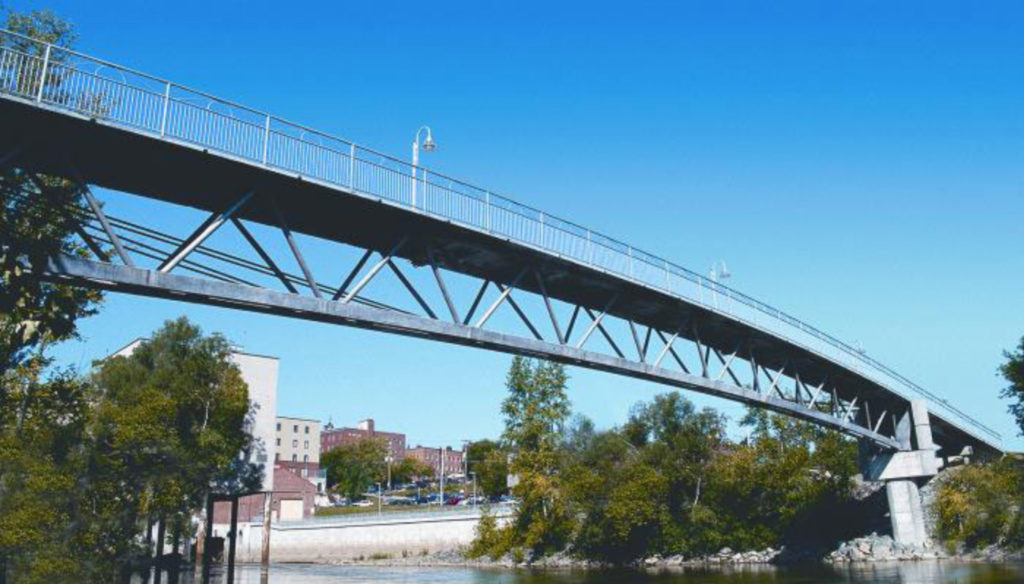
Concrete Canada: síť center Excelence zaměřených na vysokohodnotný beton
V roce 1980 spustila federální vláda v Kanadě program Center Excelence, jehož cílem bylo vytvořit síť 14 výzkumných center po celé Kanadě, kde budou spolupracovat akademičtí pracovníci společně s pracovníky z praxe, aby byla zvýšena úroveň aplikovaného výzkumu a aby byl urychlen transfer technologií. Concrete Canada se stalo jedním z těchto center a bylo podporováno částkou 10 milionů dolarů po dobu devíti let. To výrazně přispělo k uplatnění vysokohodnotného betonu v Kanadě [6], [13].
Během existence centra Concrete Canada byly z vysokohodnotného betonu vybetonovány plošina Hibernia a Confederation Bridge a z ultra vysokohodnotného betonu byla postavena lávka v Sherbrooke.
Éra polycarboxylátetherů
Zatímco první plastifikátory byly levné vedlejší produkty průmyslu, objev velmi výrazných dispergačních vlastností polysulfonátů úplně změnil pohled na přísady. Osvědčily se nové, dražší syntetické polymery vyvíjené speciálně pro beton, které tak významně vylepšily jeho vlastnosti, že to kompenzovalo jejich vysokou cenu. V současnosti je používání syntetických chemických přísad na denním pořádku. A to nejen pro dispergaci zrn cementu a nebo snížení vodního součinitele, ale také pro modifikaci viskozity, pro redukci smrštění, pro tvorbu expanzivních produktů, pro potlačení koroze a pro zlepšení dalších vlastností.
Přísady pro zlepšení čerpatelnosti a modifikátory viskozity
Původně byly přísady na zlepšení čerpatelnosti vyvinuty pro snadnější čerpání běžného betonu a pro ukládání betonu pod vodou bez rizika jeho rozplavení nebo segregace. Brzy se ukázalo, že s tímto novým typem přísad je možné modifikovat viskozitu takovým způsobem, že se stalo reálným vyrábět beton, který je nyní označován jako samozhutnitelný (SCC – Self Compacting Concrete). Samozhutnitelný beton byl vyvinut v Japonsku kvůli zlevnění ukládání betonu, které vyžadovalo drahé stavební dělníky. Dnes je použití samozhutnitelného betonu zcela běžné na celém světě. V nejvyšších budovách, které se v současnosti staví, jsou stropy betonovány z SCC s pevností 30 až 40 MPa, který je čerpán přímo tam, kde je ho třeba. Následně jsou stropy většinou dodatečně předepnuty.
Výstavba Confederation Bridge představovala jedno z prvních použití viskozitu modifikujících přísad v Kanadě. SCC byl používán zejména při betonáži základů sloupů pod vodou. Používána byla welanová guma – mikrobiální polysacharid vznikající fermentací cukru specifickou bakterií.
Polymery založené na polykarboxylátetherech
Kolem roku 1990 bylo zjištěno, že k velmi účinné dispergaci cementových zrn může být použito nové skupiny polymerů. Tato nová skupina superplastifikátorů je nyní známa jako polyakrylátethery nebo polykarboxylátethery (PCEs). Ukázalo se, že většina PCEs je při stejném dávkování účinnější než polysulfonáty, a přitom méně zpomaluje počátek tuhnutí a tvrdnutí.
PCEs sestávají z hlavního řetězce, na který jsou vázány další boční řetězce, jak je znázorněno na obrázku níže. Jejich účinnost není dána elektrostatickým odpuzováním, jako je tomu u polysulfonátů, ale zejména sterickým odpuzováním [2].
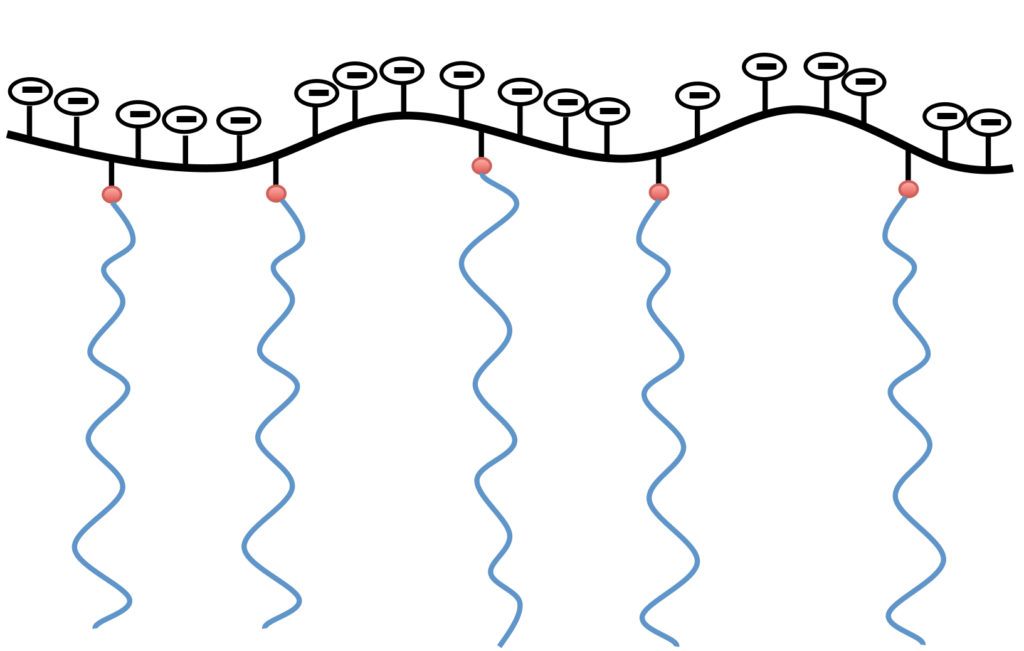
Zatímco PNS a PMS jsou dobře definované polymery s jednoduchou konfigurací, u PCEs tomu tak není. Existují různé délky hlavních řetězců a stejně tak i vedlejší řetězce mohou mít různou délku a složení. Různý může být i počet vedlejších řetězců, které se vážou na hlavní řetězec. Z tohoto důvodu zahrnuje označení PCEs velice širokou oblast polymerů a zatím není jisté, jak najít tu nejúčinnější kombinaci základních parametrů, které ovlivňují výslednou účinnost tohoto nového typu superplastifikátorů [18].
Brzy se ukázalo, že PCEs mají tendenci zachycovat větší vzduchové bubliny o průměru několika stovek mikrometrů. To je desetkrát více než ve srovnání s velikostí vzduchových pórů získaných při použití dobré provzdušňovací přísady. Jednoduše řečeno, dobrá provzdušňovací přísada stabilizuje vzduchové bublinky o průměru stejného řádu, jako je velikost zrn cementu (několik desítek mikrometrů), zatímco PCEs zachycuje bubliny nepravidelného tvaru a rozměru podobného, jako jsou zrna písku (i několik milimetrů v průměru).
Dopady těchto velkých pórů jsou ilustrovány na dvou případech, ve kterých tyto póry způsobily v Kanadě problémy. Jeden problém se týkal průmyslových podlah vyžadujících povrchové vsypy a druhý mrazuvzdornosti betonů.
Průmyslové podlahy se zpevněním povrchu
Protože jsou nyní v Kanadě používány přísady založené na PCEs, mají neprovzdušněné betony obsah vzduchu do 2,5 až 3 %, zatímco dříve, před použitím PCEs, to bylo 1 až 1,5 %. Kromě toho bylo zjištěno, že pokud je pro zvýšení tvrdosti povrchu průmyslové podlahy používán vsyp, dochází často po několika měsících používání podlahy k delaminaci, pokud má beton obsah vzduchu vyšší než 3 %. Proto je pro vyloučení delaminace průmyslových podlah nutné přidat odpěňovač, aby byl snížen obsah zachyceného vzduchu pod 1,5 % a eliminovaly se velké vzduchové póry o průměru stovek mikrometrů, které se tvoří kvůli použití superplastifikátorů na bázi PCEs.
Mrazuvzdorný beton
V případě betonu určeného pro podmínky se střídavým zmrazováním a rozmrazováním, který je plastifikován přísadami na bázi PCEs, je naprosto nezbytné kontrolovat součinitel rozložení vzduchových pórů, nikoli jen obsah vzduchu. Kvůli tomu, že 2 až 3 % vzduchu jsou způsobena použitím PCEs, výrazně roste součinitel rozložení vzduchových pórů. Obsah vzduchu 6 %, což bývá obvykle považováno za hodnotu, která zaručuje dobrý součinitel rozložení vzduchových pórů, pokud jsou použity lignosulfonany nebo PNS, nemusí být vůbec dostatečný pro zajištění mrazuvzdornosti betonů s PCEs. V betonu je asi 1,5 % vzduchu, který je zachycen i bez provzdušnění, a další 1,5 % vzduchu zachyceného díky PCE. Zbývají tedy pouhá 3 % účinných vzduchových pórů a to je málo.
V případě vysoké hodnoty součinitele rozložení vzduchových pórů se nedoporučuje dávkovat odpěňovač ještě před dávkováním provzdušňovací přísady. Doba míchání se tak prodlužuje a zbytky odpěňující přísady působí proti účinku provzdušňovací přísady. Pokud má tedy být míchán mrazuvzdorný beton s použitím PCEs superplastifikátorů, je nezbytné věnovat míchání speciální pozornost ve srovnání s PNS superplastifikátory, které nezachycují velké vzduchové bubliny.
Éra směsných cementů
Pro dosažení nižší uhlíkové stopy betonových konstrukcí je velmi účinným opatřením náhrada „čistého“ portlandského cementu ekvivalentním objemem minerálních příměsí nebo fillerů. Každý kilogram cementu, který se podaří nahradit minerální příměsí, znamená snížení emisí CO2, unikajícího při výrobě cementu, o 0,6 až 1 kg. Ovšem náhrada části portlandského cementu méně reaktivními materiály znamená obecně výrazné snížení počátečních pevností betonu a v případě mletého vápence jako příměsi může být také snížena dlouhodobá trvanlivost betonu, zejména pokud na beton působí mořská voda.
Aby bylo dosaženo vyhovujících počátečních pevností betonu vyrobeného ze směsných cementů, mohou být přijata tři opatření:
- chemické opatření spočívající ve zvýšení obsahu C3S a C3A ve slínku pro výrobu směsných cementů,
- fyzikální opatření spočívající v jemnějším mletí směsných cementů ve srovnání s portlandskými pro zajištění větší reaktivity,
- fyzikální opatření spočívající v dosažení větší hutnosti cementové pasty aplikací superplastifikátorů.
Zvyšování obsahu C3S ve slínku
Zvýšit ve slínku obsah C3S – složky, která zvyšuje počáteční pevnost – znamená zvýšení obsahu vápna v surovinové směsi, což znamená zvýšení emisí CO2 během výroby slínku. To trochu protiřečí snaze o redukci emisí CO2 během produkce směsných cementů. Toto řešení tak není zcela udržitelné.
Zvyšování obsahu C3A ve slínku
C3A hraje velmi výraznou roli na samém počátku vývoje pevností díky rychlé tvorbě ettringitu. Ettringit býval ovšem někdy označován jako „cementový bacil“, a to jak z pohledu reologie, tak trvanlivosti. Používání cementu s vyšším obsahem C3A může způsobit problémy při ukládání betonu, ale zejména velké problémy spojené se zpožděnou tvorbou ettringitu neboli tvorbou sekundárního ettringitu v betonech vystavených prostředí s vyšším obsahem vnějších síranů, které mohou do betonu penetrovat. Toto řešení snižuje trvanlivost betonu a není tedy udržitelným řešením.
Jemnější mletí směsných cementů
Mletí cementu spotřebuje značné množství elektrické energie. Pokud je tato energie získána z fosilních paliv, pak se díky dalším emisím CO2 část benefitu směsných cementů ztrácí. Samo o sobě to tedy také není udržitelným řešením.
Zvýšení hutnosti cementové pasty
Podle našeho názoru je zvýšení hutnosti cementové pasty tím nejudržitelnějším opatřením pro dosažení vyšších pevností betonu. Pokud jsou zrna cementu blíže k sobě, není třeba tolik „lepidla“, které by je spojilo dohromady. I nereaktivní zrno filleru přispívá k počáteční pevnosti a to tak, že tvoří pevnou inkluzi, která přenáší napětí, což vede k akceptovatelné počáteční pevnosti betonu ze směsného cementu. Efekt rostoucí hutnosti je schematicky znázorněn na obr. 12, který představuje jednoduchý model cementu s krychlovým uspořádáním cementových zrn pro konvenční cementovou pastu, pro pastu s náhradou 12,5 % cementových zrn částicemi filleru a prostorově centrovaný model krychle s náhradou 50 % cementových zrn zrny minerální příměsi [10].
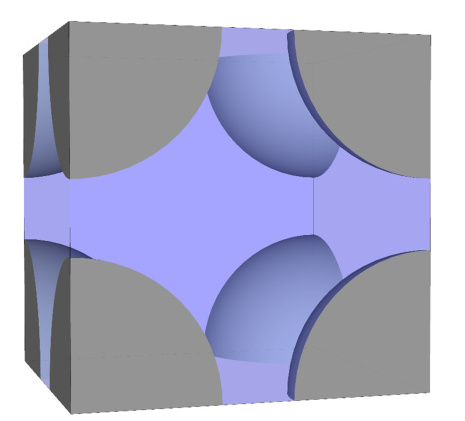
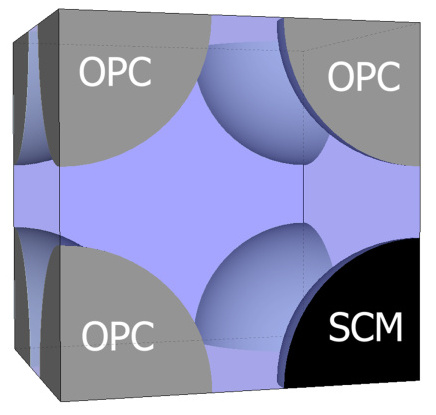

Kombinace posledních dvou způsobů
Kombinace poněkud jemnějšího mletí minerálních příměsí, aby byly reaktivnější, a současné snížení vodního součinitele w/b cementové pasty je tím nejefektivnějším a nejudržitelnějším řešením, vedoucím k zvýšení počátečních pevností betonu ze směsných cementů.
Trvanlivost moderního betonu
Trvanlivost betonu je těsně spjata s jeho schopností zabránit pronikání vody a agresivních iontů dovnitř, do jeho pórového systému. Rostoucí hutnost betonu a snížení jeho spojité pórovitosti jsou klíčovými parametry pro zlepšení trvanlivosti, které jsou zajištěny použitím plastifikátorů a superplastifikátorů, které umožňují snížení vodního součinitele, a tím vyšší hutnost uspořádání cementových zrn a kompaktnější hydráty. Velmi hutné UHPC dosahují vrcholu z hlediska trvanlivosti a cementová pasta v nich je téměř nepropustná pro vodu a ionty. Ačkoli PCEs poskytují velké benefity v redukci vodního součinitele, speciální pozornost musí být věnována jejich provzdušnění, aby byla zaručena jejich mrazuvzdornost.
Použití velmi drobných částic křemičitých úletů také velmi významně přispívá k dosažení vyšší hutnosti cementové matrice, zejména v tranzitní zóně – tedy zóně, která se tvoří kolem hrubých zrn kameniva a běžně má vyšší pórovitost. Tudy mohou ionty penetrovat a difundovat rychleji [26], [30]. Podobně se použití směsných cementů může odrazit v lepší trvanlivosti betonu, protože v případě aktivních příměsí dojde pucolánovou reakcí ke zjemnění pórové struktury a k větší hutnosti struktury hydrátů. Kromě toho může být ovlivněna schopnost hydrátů vázat na sebe agresivní ionty [11], [17]. Úsilí o dosažení vyšších počátečních pevností v případě použití směsných cementů je další příležitostí pro zlepšení trvanlivosti prostřednictvím zvýšení hutnosti pomocí drobných zrn uspořádaných těsněji k sobě. Vznikající hydráty pak vyplňují prostor rychleji a hustěji a relativní objem hydrátů je redukován. Nahrazení hydrátů nezreagovanými částicemi je výhodné, protože nezhydratovaná zrna jsou pevnější a méně pórovitá [32].
Závěr
Během posledních 50 let kanadský betonářský průmysl akceptoval technologické průlomy na poli přísad a minerálních příměsí a došlo ke zlepšení vlastností betonu jak z hlediska pevnosti, tak trvanlivosti. Tento pokrok byl ověřen na několika pozoruhodných konstrukcích, které byly během této doby postaveny: CN Tower, Scotia Plaza, plošina Hibernia, Confederation Bridge, lávka v Sherbrooke a řada dalších.
Betonářský průmysl se nyní dostal do nové éry charakterizované směsnými cementy a novými typy přísad (zejména superplastifikátorů na bázi PCEs). Za posledních 50 let se rychle vyvíjí výroba betonu i metody samotné betonáže. Mikrostruktura cementové pasty je modifikována díky použití směsných cementů a způsob působení PCEs je zcela odlišný od PNS. Osvojení si použití směsných cementů a PCEs představuje novou výzvu. Ale kdo bude mít o tuto novou výzvu zájem? Cementáři, betonáři, výrobci přísad, nebo výzkumníci? Autoři jsou přesvědčeni, že stavebnímu průmyslu přinese skutečný benefit jen koordinovaná snaha všech těchto odvětví.
Redakce děkuje za překlad anglického originálu doc. Ing. Vlastimilu Bílkovi, Ph.D.
Literatura
[1] AïTCIN, P.-C. What we learned from building the Confederation Bridge. In: Proceedings of the Confederation Bridge Engineering Summit. Charlottetown, PEI, 19 – 22 August 2007, pp. 190 – 194.
[2] AïTCIN, P.-C., and FLATT, R. Science and Technology of Concrete Admixtures. Woodhead Publishing, Imprint of Elsevier, 2015.
[3] AïTCIN, P.-C., and LESSARD, M. Canadian experience with air-entrained high performance concrete. Concrete International. 1984. 16(10): 35 – 38.
[4] AïTCIN, P.-C., LAPLANTE, P., and BÉDARD, C. Development and experimental use of a 90 MPa Field Concrete. ACI SP 87. 1985, pp. 51 – 70.
[5] AïTCIN, P.-C., SARKAR, S. L., and LAPLANTE, P. Long term characteristics of a very high strength field concrete. Concrete International. 1990, 12(10): 40 – 44.
[6] AïTCIN, P.-C., BALLIVY, G., MITCHELL, D., and COULOMBE, L. G. The use of highperformance air-entrained concrete in severe environment.
ACI SP-140. 1993, pp. 53 – 72.
[7] AïTCIN, P.-C., LACHEMI, M., ADELINE, R., and RICHARD, P. The Sherbrooke reactive powder footbridge. Journal of the International Association for Bridge and Structure Engineering. 1998, 8(2): 140 – 147. DOI: 10.2749I101686698780489243
[8] AïTCIN, P.-C., LACHEMI, M., and PAULTRE, P. The First UHSC Structure 15 Years Later. In: Proceedings of the 3rd All Russia (12th International) Conference on Concrete and Reinforced Concrete. Moscow, Russia, 12 – 16 May 2014, Tome 7, pp. 2 – 22.
[9] AïTCIN, P.-C., MINDESS, S., and LANGLEY, W. S. The Confederation Bridge. In: Marine Concrete Structures. Edited by M. Alexander. Elsevier, London, 2016.
[10] AïTCIN, P.-C., WILSON, W., and MINDESS, S. Increasing the strength of concrete made with blended cements. Concrete International. 2016, 38(8): 49 – 52.
[11] BEAUDOIN, J. J., RAMACHANDRAN, V. S., and FELDMAN, R. F. Interaction of chloride and C‑S‑H. Cement and Concrete Research. 1990, 20(6): 875 – 883. DOI:10.1016/0008- 8846(90)90049 – 4
[12] BICKLEY, J. A. The CN Tower, A 1970’s Adventure in concrete technology. ACI Spring Convention. Toronto, ON, Canada, 2012. 20 p.
[13] BICKLEY, J. A., and MITCHELL, D. A state of the art review of high performance concrete Structures Built in Canada: 1990 – 2000. The Cement Association of Canada, 2001. 114 p.
[14] BLAIS, A. F., DALLAIRE, E., LESSARD, M., and AïTCIN, P.-C. The reconstruction of the Bridge Deck of the Jacques Cartier Bridge in Sherbrooke Using a High Performance Concrete. In: Proceedings of the annual CSCE Conference. Edmonton, Vol II b, 1996, pp. 501 – 508.
[15] BONNEAU, O., POULIN, C., DUGAT, J., RICHARD, P., and AïTCIN, P.-C. Reactive powder concrete from theory to practice. Concrete International. 1996, 18(4): 47 – 49.
[16] COULOMBE, L. G., and OUELLET, C. Construction of two experimental bridges using high performance air-entrained concrete. In: Transportation Research Board Annual Meeting. Washington, 1995.
[17] FLOREA, M. V. A., and BROUWERS, H. J. H. Chloride binding related to hydration products. Cement and Concrete Research. 2012, 42(2): 282 – 290. DOI:10.1016/j. cemconres.2011.09.016
[18] GELARDI, G., MANTELLATO, S., MARCHON, D., PALACIOS, M., EBERHARDT, A. B., and FLATT, R. J. Chemistry of chemical admixtures. In: The science and technology of concrete admixtures. Edited by P.-C. Aïtcin and R. Flatt. Woodhead Publishing, 2015, pp. 149 – 207.
[19] HOFF, G. C., and ELIMOV, R. Concrete production for the Hibernia platform. In: Supplementary Papers, 2nd CANMET/ACI International Symposium on Advances in Concrete Technology. Las Vegas, Nevada, April 1995, pp. 717 – 739.
[20] KIM, B.-G., JIANG, S., and AïTCIN, P.-C. Effect of sodium sulfate addition on properties of cement pastes containing different molecular weight PNS superplasticizers. ACI SP-195. 2000, pp. 485 – 504.
[21] LACHEMI, M., and AïTCIN, P.-C. Influence of ambient and fresh concrete temperature on the maximum temperature and thermal gradient in a high performance concrete. ACI Materials Journal. 1997, 94(2): 102 – 110.
[22] LACHEMI, M., LESSARD, M., and AïTCIN, P.-C. Early age temperature development in a high performance concrete viaduct. ACI SP-167. 1996, pp. 149 – 174.
[23] Lachemi, M., Bouzoubaâ, N., and Aïtcin, P.-C. Thermally induced stresses during curing in a high performance concrete bridge. Field and Numerical Studies. In: Proceedings of the 2nd International Conference in Civil Engineering on Computer Applications, Research and Practice. Barheim, April. University of Barheim Press, 1996, Vol. 2, pp. 451 – 457.
[24] MITCHELL, D., PIGEON, M., ZAKI, A. R., and COULOMBE, L. G. Experimental Use of High-Performance Concrete in Bridges in Québec. In: Proceedings of the Structural Concrete Conference CPCA/ CSCE. Toronto, May 1993, pp. 63 – 72.
[25] NKINAMUBANZI, P.-C., MANTELLATO, S., and FLATT, R. Superplasticizersin Practice in Science and Technology of Concrete Admixtures. Edited by P.-C. Aïtcin and R. Flatt. Woodhead Publishing, 2015, pp. 353 – 378.
[26] OLLIVIER, J. P., MASO, J. C., and BOURDETTE, B. Interfacial transition zone in concrete. Advanced Cement Based Materials. 1995, 2(94): 30 – 38 DOI:10.1016/1065 – 7355(95)90037 – 3
[27] QUINN, P. Silica fume concrete in super high strength concrete for tall buildings. Construction Canada. 1988, 30(2): 7 – 8.
[28] RICHARD, P., and CHEYREZY,M. Reactive powder concrete with high ductility and 200 – 800 MPa compressive strength. ACI SP-144. 1994, pp. 507 – 518.
[29] RYELL, J., and BICKLEY, J. A. Scotia Plaza: High strength concrete for tall buildings. In: Proceedings of the Symposium on Utilization of High Strength Concrete. Edited by I. Holland et al. Tapir, Stavanger, Trondheim, Norway, June 1987, pp. 641 – 653.
[30] SCRIVENER, K. L., CRUMBIE, A. K., and LAUGESEN, P. The interfacial transition zone (ITZ) between cement paste and aggregate in concrete. Interface Science. 2004, 12: 411 – 421. DOI:10.1023/ B:INTS.0000042339.92990.4c
[31] TADROS, G., COMBAULT, J., FOTINOS, G. The design and Construction of the Northumberland Straight Crossing Fixed Link in Canada. In: Proceedings of the 15th Congress of IABSE. Copenhagen, Denmark, June 1996, 24 p.
[32] WILSON, W., RIVERA-TORRES, J. M., SORELLI, L., DURÁN-HERRERA, A., and TAGNIT-HAMOU, A. The micromechanical signature of high-volume natural pozzolan concrete by combined statistical nanoindentation and SEM-EDS analyses. Cement and Concrete Research. 2017, 91: 1 – 12. DOI:10.1016/j. cemconres.2016.10.004
[33] WOODHEAD, H. R. Hibernia development project – development of the construction site. Canadian Journal of Civil Engineering. 1993, 20(3): 528 – 535. DOI:10.1139/l93-067 [34] WOODHEAD, H. R. Hibernia Offshore Oil Platform. Concrete International. 1993, 15(12): 23 – 30.
Pierre-Claude Aïtcin
Emeritní profesor na Katedře stavebního inženýrství Stavební fakulty Université de Sherbrooke v Kanadě. Je členem Canadian Academy of Engineering, členem Canadian Society of Civil Engineering a čestným členem American Concrete Institute (ACI). Ve své výzkumné činnosti se soustřeďuje zejména na výrobu a použití vysokohodnotného betonu, betonů ultra vysokých pevností a na zpracování druhotných průmyslových surovin v betonu. V roce 1995 obdržel od ACI cenu Artura R. Andersona za „vynikající laboratorní a praktický výzkum týkající se složení, struktury a vlastností vysokohodnotného betonu, superplastifikátorů a křemičitých úletů“ a je též nositelem ceny Lionela Bouleta, nejvyššího vědeckého ocenění, které uděluje vláda Quebecu (2002). Je autorem řady vědeckých článků a knih, za všechny zmiňme High-Performance Concrete, která vyšla poprvé anglicky v roce 1998 a v České republice byla vydána v roce 2005 pod názvem Vysokohodnotný beton.
William Wilson
Vědecký pracovník na École Polytechnique Fédérale de Lausanne ve Švýcarsku, který svůj zájem zaměřuje na mikrostrukturu betonu, transport chloridů betonem a na inženýrské vlastnosti vysoce trvanlivých betonů, připravených s použitím minerálních příměsí.
Sidney Mindess
Emeritní profesor University of British Columbia v Kanadě, jeho zaměřením je trvanlivost betonu, udržitelnost betonu a predikce jeho životnosti. Působí také jako konzultant při řešení různých problémů týkajících se betonu.


